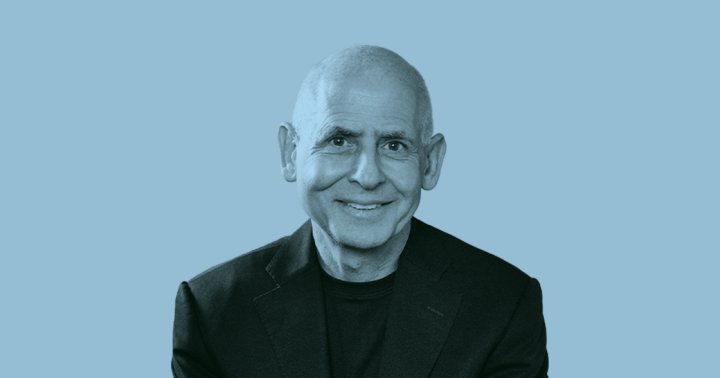Research on How Mindfulness Changes the Brain (and How It Doesn’t)
Mindfulness-Based Stress Reduction may not change the structure of our brains, but scientists say that this isn’t necessarily a bad thing The post Research on How Mindfulness Changes the Brain (and How It Doesn’t) appeared first on Mindful.

It’s a popular headline in the media, and a topic that’s been covered many times in the past decade: mindfulness not only helps to improve well-being and reduce stress, but it can actually change our brains.
Researchers can measure brain changes both as function (how well our brains perform certain actions, and the interactions or connections between different brain regions) and structure (the physical make-up of the brain). Previous research on brain structure has found an increase in gray matter volume (GMV) and gray matter density (GMD) in various brain regions of participants who have completed the Mindfulness-Based Stress Reduction (MBSR) program.
Humans need gray matter to learn and remember, make decisions, and regulate emotions. So more of the gray stuff (and a greater density of it) is thought to be a good thing. “Structural changes in the brain with meditation has always been an appealing possibility, because it would underscore the extent of human neuroplasticity…that arises purely as a consequence of mental practice,” says Richie Davidson, world-renowned neuroscientist and Director of the Center for Healthy Minds at the University of Wisconsin-Madison (UWM).
How Do We Study Brain Change?
Structural changes in the brain that are a result of other types of activities, such as physical exercise and balance training, are well documented.
The science on mindfulness and structural brain changes has limitations, though. Older studies compared MBSR participants to inactive control groups (such as a waitlist), which means it’s harder to tease out the specific effects of the meditation component. Studies also included individuals who self-selected to participate instead of being randomly allocated, and overall sample sizes were quite small.
The simple act of choosing to participate in a research study on mindfulness and stress reduction could skew the results to show a greater benefit. This doesn’t mean the findings are incorrect, but they may not be generalizable to a wider population.
Beyond study design problems, the methods of statistical analyses used to analyze the data have also changed. “The type of analysis that used to be performed is no longer an acceptable technique,” says Tammi Kral, behavioral scientist at Healthy Minds Innovations.
In light of these limitations, Kral and Davidson, along with colleagues at UWM, set out to do a conceptual replication of the original research, to test the claims that MBSR training can change our brains.
Zeroing In on the Effects of Mindfulness
The 2022 study combines data from two randomized controlled trials, which compared the MBSR group to both a waitlist group and an active control group. The control intervention was called the Health Enhancement Program (HEP), and involved exercise, music therapy, and nutrition education and activities. By comparing MBSR and HEP to a waitlist group, the specific benefits of the mindfulness meditation training could be isolated, rather than the nonspecific benefits associated with generalized and improved well-being.
The results were not what they expected. “The failure to find any systematic differences in brain structure was surprising to us,” says Davidson.
There was a small difference between the MBSR group and HEP group in the influence of practice time on GMV in the amygdala (the part of our brain involved in the experience of emotion), but Kral says that the findings didn’t hold up to closer scrutiny. It’s possible that changes in amygdala volume could depend on how many hours participants practice outside of formal class time, but further work is needed to confirm this.
What We Know About How Mindfulness Changes the Brain
Long-time meditators and mindfulness proponents should take heart: there’s no reason to be discouraged by these findings. “Just because we didn’t see structural changes in the brain, doesn’t mean that there aren’t [other] changes in the brain,” says Davidson. “What really matters is how our brain functions.”
“Just because we didn’t see structural changes in the brain, doesn’t mean that there aren’t [other] changes in the brain. What really matters is how our brain functions.”
Richie Davidson, neuroscientist and Director of the Center for Healthy Minds at the University of Wisconsin-MadisonThe MBSR program is made up of many different components: yoga, meditation, social interaction in the group setting, and more—all likely represented by different areas of the brain, which are connected through our complex brain network. This means that mindfulness meditation training could be changing the brain in “really small amounts” says Davidson. “It’s just not going to be observable to our current methodology.”
Kral also points out that the primary aims of these two trials were more focused on functional brain changes, which could impact the experience and regulation of emotion and pain. “In those domains, we did see [positive] effects of the MBSR training,” she says.
Moreover, the MBSR program is eight weeks and translates to about 24 to 30 hours of practice, which is a drop in the bucket when it comes to the longer-term effects that mindfulness meditation can induce. Davidson says that published studies (including some from his team) have found structural brain changes from very long-term meditation practice. “This should be an invitation and inspiration for people to get on the cushion and put in the time, because that’s what it will take to produce these changes.”
It Matters Why You Meditate
Research suggests that the way you view your emotional and psychological life may influence your reasons for meditating, and how much benefit you get from the practice.
Read More

 Konoly
Konoly 



























.jpg&h=630&w=1200&q=100&v=a905e78df5&c=1)




